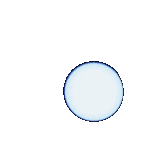Artist Statement
Net Art Ipsum is a code based browser artwork that pokes loving fun at the language used by critics who analyze net art. This artwork is also a functioning tool for generating dummy placeholder text for graphic designers and writers.
The original concept for the artwork and the design of the website is by Carrie Gates, while the code for the lorem ipsum generator was built by Lennie Budgell. This piece was created for The Wrong – New Digital Art Biennale in 2015, for the pavilion curated by Benoit Mathieu Palop.
![]()
Technical Information
Trigram language model
The primary mechanism used for the generation of the text output by netartipsum is based on use of a type of probabilistic language model called the trigram language model that has the Markov Property (The Markov property is the independence of the future from the past, given the present). – CMUStatistics: Markov Process
From Language Modeling by Michael Collins
A trigram language model consists of a finite set V, and a parameter
q(w|u, v)
for each trigram u,v,w such that w ∈ V ∪ {STOP}, and u,v ∈ V ∪ {*}. The value for q(w|u,v) can be interpreted as the probability of seeing the word w immediately after the bigram (u, v). For any sentence x1 . . . xn where xi ∈ V for i = 1…(n − 1), and xn = STOP, the probability of the sentence under the trigram language model is
where we define x0 = x−1 = *.
For example using the sentence
The death of computer art STOP
would give
p(The death of computer art STOP) =
q(The|*, *)×q(death|*, the)×q(of|the, death)×q(computer|death, of)×q(art|of, computer)×q(STOP|computer, art)
Another less Maths heavy way of looking at the trigram concept in a simpler generalized scope would be as follows. In the expression above there is one term for each word in the sentence and each word only depends on the previous two words.
When the described probability model is used on an entire corpus of text it allows for the ability to input a current word pair and return a word from the options of possible words based upon their frequency in following the given word pair over the whole corpus that is analyzed. For sentence generation the word returned is added after the current word pair and then the process is redone with the new word pair being the second word in the prior word pair and the new word or simply shifting pair selection over one word.
Due to the choice of word returned being based on a probabilistic model it is a good chance the sentences will make sense without any natural language processing steps most of the time. The larger (and of similar syntax & language and subject matter of the corpus’s various sources) the better chance of realism in the readability of the generated output sentences.
Still uncertain of how or what is happening in what you see output in netartipsum? I suggest this quick and easy to grasp explanation of it. Markov Chain Sentence Generation Simple Walkthrough
![]()
Text Sources
(in no particular order)
- “Why Are There No Great Women Net Artists?” by Jennifer Chan
- “Postinternet Observations” by Karen Archey
- “Why I Hate Post-Internet Art” by Brian Droitcour
- “Empathy and Disgust” by Michael Connor
- “The Perils of Post-Internet Art” by Brian Droitcour
- “Impulse 101: An essay about art, the internet and everything” by Anthony Antonellis
- “A Letter to Young Internet Artists” by Emilie Gervais
- “Art in Your Pocket 4: Net Art and Abstraction for the Small Screen” by Johan Brucker-Cohen
- “Ten Myths of Internet Art” by Jon Ippolito
- “Feed My Feed: Radical Publishing in Facebook Groups” by Dorothy Howard
- “more on radical facebook groups” by Tom Moody
- “The World’s Worst Computer Viruses Iluustrated” by Alison Nastasi
- “What Is Post-Internet Art? Understanding the Revolutionary New Art Movement” by Ian Wallace
- “Science Fiction Realism” by Erik Zepka
- “The Way We Share: Transparency in Curatorial Practice” by Lindsay Howard
- “The Internet, a Tool for Art?” by Karen Elliot
- “What is Tumblr Art?” by Joel Kuennan
- “The Image Object Post-Internet” by Artie Vierkant
- “The Internet Made Me Hardcore” by Alexander Wolff
- “What’s Postinternet Got to do with Net Art” by Michael Connor
- “The Measure Of Success: Making Art in the “Like” Economy” by Julia Kaganskiy
- “The Commodification of Net Art” by Jennifer Chan
- “Why Is Our Era’s Greatest Art Movement Missing from the Whitney Biennial?” by Paddy Johnson
- “Selling Out: The Impact of Corporate Social Media Space on Art” by Kyle Chayka
- “Post-media Aesthetics” by Lev Manovich

About the Creators
Carrie Gates
Carrie Gates’ video mixing works use sound-reactive 3D processing and unusual rhythmic juxtapositions to create throbbing, psychedelic, responsive compositions that add a new dimension of interaction and intrigue to any environment. Abstract digital imagery is mixed live with hand-shot, performance-art-influenced footage, to create a hypnotizing, bent reality that is infused with concepts of visual music, set in a glitched-out 3.0 fantasy realm. Gates is also the creator of the browser artwork Pizzabook and the founder of the Church of Electrons. She has played an active role in experimental electronic music communities and independent artist-run organizations since the mid-1990s.
Carrie Gates has been a featured artist on VICE’s ‘Noisey’ site, VICE’s ‘The Creator’s Project’, Print All Over Me, and VirtualGallery.com. Gates’ live performances and digital art screenings include: GIFs to Have Sex By (TRANSFER, New York, 2015), X+1 (MAC Musée d’art contemporain de Montréal, Montréal, 2015), DTV 2015 Winter/Spring Season (The Drake Hotel, Toronto, 2015), REFRACTION (TRANSFER, New York, 2014), 28 SECONDES (GALLERY T, Lyon, 2014), Unbecoming Glitch (Vidéographe, Montréal, 2014), ZERø 0ne (POWERPLNT, New York, 2014), BYOB Prague (Signal Festival, Prague, 2014), MEME Festival (Winnipeg, 2013, 2015), Hacktist (Nomade Art Space, Hangzhou, 2013), The Wrong – New Digital Art Biennale – Young Internet Based Artists pavilion (Sao Paulo, 2013), Saskatoon Fashion and Design Week Runway Show (2013-2015), SPAMM / CUPCAKE net art exhibition (Super Arte Moderne Musée, Nice, 2013), Glitch Symposium with Jon Cates (Neutral Ground, Regina, 2013), Blue Balls Festival (Lucerne, 2012), Sight & Sound Festival (Eastern Bloc, Montréal, 2012), Montréal Fetish Weekend (2012), INDEX Festival (New York, 2011), Vancouver New Music Festival ( 2011), RE:FLUX Festival (Moncton, Canada 2011), Kassel Dokfest (2010), Mapping Festival (Le Zoo, Geneve, 2010), Queer City Cinema (Regina, 2010), Club LUX (Berlin, 2010), and send + receive (Video Pool, Winnipeg, 2006, 2007). She is a resident of the Motion Notion Festival (Golden, Canada, 2005-2011, 2013-2015) and has headlined the main stage for nine years. Gates’ video work is screening internationally in 2015-2016, as part of Lorna Mills’ collaborative project “Ways of Something”, in which contemporary digital artists remix the classic art history documentary “Ways of Seeing” by John Berger. Gates also creates websites and print materials for small businesses, academic organizations, Aboriginal communities, artists, and music labels. Carrie Gates has a degree in Art History from the University of Saskatchewan.
Lennie Budgell
My name is Lennie Budgell. I am a programmer and a musician who creates a variety of music. I enjoy code, computers, Maths, AI & Neuropsychopharmacology. I have a B.Sc. in Computer Science from the University of Saskatchewan and a diploma in Computer Systems Technology from Kelsey SIAST.
![]()
Thanks pals!
Shouts out to Anthony Antonellis, Erik Rzepka, Jennifer Chan, Organ Armani, Jeremy Bailey, Jon Cates, and the Church of Electrons for your support 🙂




















